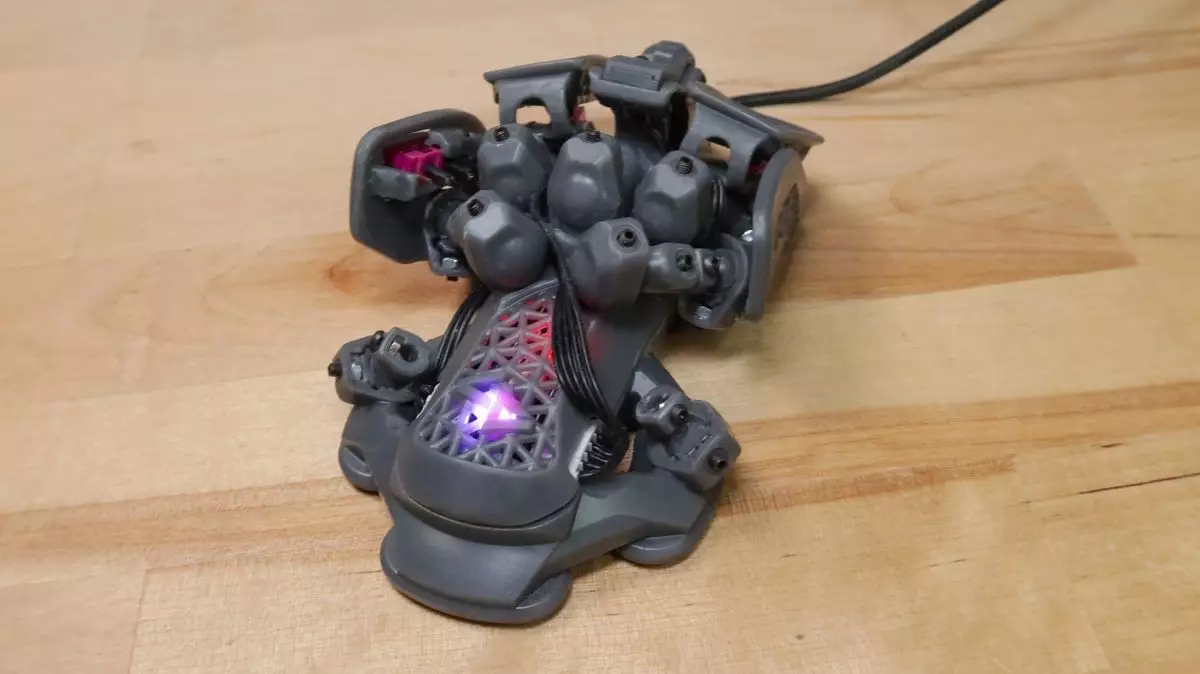In the vast world of technology, few concepts resonate as profoundly as that of adaptability. Inspired by the philosophical musings of Friedrich Nietzsche, one might argue that endless exploration can lead to an existential crisis—in the realm of mouse design, this crisis translates into an obsession for maximum adjustability. Enter the Statial.b, an innovative open-source adjustable mouse developed by PyottDesign. This peculiar device challenges conventional ergonomics, opening a dialogue on the balance between form and function.
While Nietzsche might have turned his philosophical lens on the implications of humanity’s search for meaning, the creators of the Statial.b have scrutinized a different type of void: the limitations of standard mouse designs that have dominated the market for years. The novelty of the Statial.b lies not merely in its aesthetic quirks but in its ability to mold itself to the user’s grip style, thereby enhancing comfort and usability. Yet, one might wonder, could such extreme customization come at the expense of the design’s intrinsic human-friendliness?
Beyond Conventional Aesthetics
At a glance, the Statial.b may evoke mixed reactions—its aesthetics are unconventional, resembling a Razer DeathAdder subjected to a bizarre mishap or an avant-garde sculpture meant for a tech museum. The fear of trypophobia, too, may arise at first sight given the device’s multitude of adjustability options. However, this initial shock is quickly overshadowed by the realization that the design prioritizes the human experience above all else.
The creators have articulated their vision: “Modern grip styles have grown out of players adapting to standardized mouse shapes.” Rather than enforcing a rigid framework, the Statial.b expands the horizon of ergonomic designs, facilitating personalization through its customizable features. Users can adapt the mouse not only into popular configurations like fingertip, claw, and palm grips but also develop a unique grip style that aligns perfectly with their individual needs and hand shapes.
Diving deeper into the construction and mechanics of the Statial.b reveals a labyrinth of moving parts and intricate mechanisms designed for fluid adaptability. The challenge lies in the complexity of customization; creating a mouse that fits like a glove requires a myriad of adjustments. PyottDesign has taken steps to make this process transparent, providing a plethora of images and guides on their product page for users willing to engage with the assembly process.
However, this open-source construct necessitates a hands-on approach. Users looking to build their own adjustable mouse will likely need a foundational understanding of 3D printing, basic electronics, and coding. This DIY aspect may intimidate those unfamiliar with the technicalities, posing a barrier to entry that could limit the product’s reach.
Yet, for those equipped with the requisite skills and a flair for innovation, the allure of a tailor-made mouse could be a compelling endeavor. Not only would they possess a device that precisely caters to their grip and preferences, but they would also indulge in the satisfaction of creating something uniquely their own.
As the landscape of technology continues to evolve, the Statial.b serves as a harbinger of what the future may hold for ergonomic design. The mouse epitomizes a fundamental shift towards user-centric products that allow for greater flexibility. In an era where personalization is paramount, such innovations will likely inspire similar trends in various segments of product design.
Ultimately, the Statial.b is not simply an adjustable mouse—it represents a philosophical statement about the intersection of technology and human experience. While it may appear to flirt with the absurd, its focus on adaptability and comfort taps into a deep-seated need for individuals to assert control over their tools in an increasingly complex world. As we embrace more personalized technology, the Statial.b beckons us to reconsider the very essence of how we interact with our devices. In doing so, it may not only enhance our productivity but could also signify a profound advancement in our relationship with technology itself.

